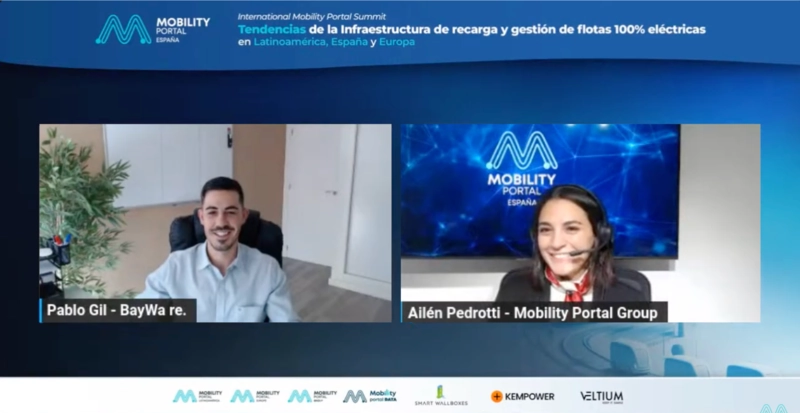What does he mean by this comparison between the Netherlands and Spain?
To the deployment of ultra-fast charging points for electric vehicles in the national territory.
On countless occasions, the transition to eMobility taking place in the Nordic countries is considered a model to follow for the rest of the European Union nations.
But it seems Spain has nothing to envy them.
During the International Mobility Portal Summit, Pablo Gil Soler, EV Charger Specialist at BayWa r.e. Solar Distribution/ES, states: “In the Netherlands, electromobility is part of everyday life and is a world pioneer.”
However, he points out: “It is the size of Aragon.”
What does he mean by this? That the national territory presents other complexities that are often not considered when making this comparison or aspiring to reach the same level.
Among them, not only the dimension, but also the orography which “is not as flat as in the Netherlands and this makes everything a bit more complicated.”
According to the Electric Mobility Yearbook prepared by the Business Association for the Development and Promotion of Electric Mobility (AEDIVE), Spain concluded 2023 with 2,510 ultra-fast chargers installed, out of a total of 30,350.
Of these, 1,923 have a power ranging between 50 and 250 kilowatts (kW), representing a growth of 95 per cent compared to 2022, while 587 are 250 kW or more, representing an increase of 90 per cent.
This shows that the country has focused its attention on this charging capacity, crucial especially for heavy vehicles, achieving a remarkable deployment.
However, certain locations still need to be covered.

“It seems that the areas without coverage directly coincide with the areas of lower population density, such as Castile and Extremadura,” says Pablo Gil Soler.
And he emphasizes: “It makes sense that this is the case, since, in the end, a private company seeks to at least recoup a portion of its investment.”
This is one of the challenges faced by charging point operators (CPOs) when deciding to install ultra-fast chargers.
According to the representative of BayWa r.e. Solar Distribution/ES, the investment that considers a high-power charging hub can exceed 100,000 euros, even if it has only a couple of points.
“With the current automotive fleet we have in Spain, a 100 per cent return on investment cannot be guaranteed, so long-term calculations are necessary,” he maintains.
It should also be noted that “these chargers have a lifespan of between 10 and 20 years approximately.”
How can this obstacle be addressed?
Mainly, with a commitment from public administrations that guarantees certainty to sector players, either by improving current incentives to encourage safe investment or by reducing bureaucratic procedures.
This, in turn, will promote the expansion of the charging infrastructure and facilitate more Spaniards opting to purchase zero-emission cars.
“As the number of electric vehicles increases, private companies will embrace this development,” highlights Pablo Gil Soler during the virtual event organized by Mobility Portal España.
The other side of the coin
At this point, the EV Charger Specialist at BayWa r.e. Solar Distribution/ES emphasizes that not all responsibility should fall on the Government.
On the contrary, he highlights the country’s progress in this transition to eMobility.
“In Spain, we have to be proud of what we have achieved: we have entered the top 10 countries with the most chargers with around 32,000 operational, of which a third are fast and ultra-fast chargers,” he states.
Not only that.
Additionally, the national territory stands out in the adoption of renewable energies.
Spain has the financial resources and a public administration capable of managing incentives more effectively and committed to making the requested improvements.
As well as with all the resources available and actors capable and involved in this transition.
Therefore, Pablo Gil Soler concludes: “The ingredients are there, now it’s time to make the recipe.”
Relive BayWa r.e. Solar Distribution/ES’s participation in the International Mobility Portal Summit:








